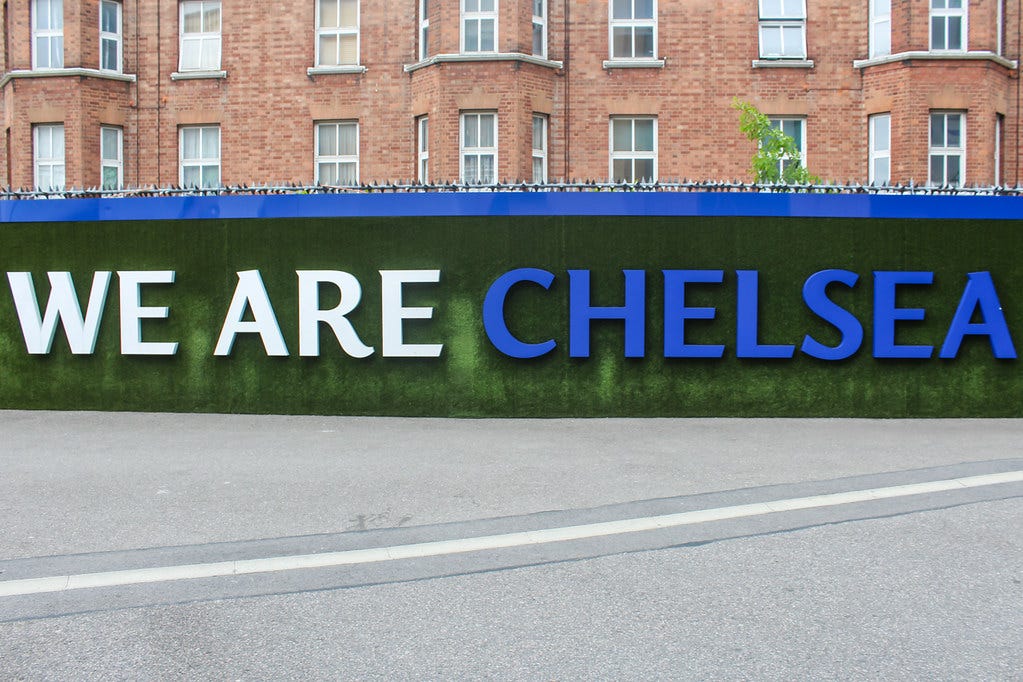Actual age and experience, not expected goals, explain Chelsea's season
Chelsea are working through an exercise in unprecedented absurdity, made worse by a public failure to acknowledge crucial context.
The niche subset of rationalistic Chelsea fans have wrought a shred of optimism that the former Pride of London isn’t as bad as results suggest. Underlying stats, particularly the ever-popular and oft-overvalued Expected Goals, show the Blues to be an above average team stuck in a rut that should naturally sort itself out.
Might this just be mathematical mental gymnastics trying to subvert the sense of misery that comes with each disappointing result?
Briefly, yes. These glass-half-full mathletes are up against a formidable foe: reality.
Chelsea has amassed a formidable 39 points from their last 38 Premier League matches. xG be damned, Chelsea truly is that bad. Per one of football’s pre-analytical rules of thumb, the sub-40 point total suggests relegation level incompetence. Recent history is a bit kinder: 40 points tends to land you closer to 15th than 18th. But the point remains. Thirty-eight matches is a reasonable sample size, and the most recent sample available shows Chelsea to be a candidate for the trap door.
Sometimes, the doom and gloomers simply reflect reality.
A mismatch between underlying stats and observable performance is hardly unique to Chelsea. At any given time, a team is likely over- or underperforming relative to underlying stats.
Setting Chelsea apart from your run of the mill disparities between expected anything and actual reality are the severity and longevity of the dissonance. Since the start of last season, Chelsea has scored 42 league goals against an xG of 61. In the six league matches so far this season, it’s five actual goals versus 11.5 xG. That’s a brutal degree of profligacy, and it’s only getting worse.
For the pundits and Twitterati dining out on the “Chelsea has spent nearly $1 billion since Todd Boehly acquired the club” trope, it’s a time of gluttony, lazy as that take might be.
Chelsea is, of course, in an uniquely extreme rebuilding phase, as the exorbitant transfer spending would indicate, and it’s worth looking at just how outrageously severe the overhaul is. It’s perfectly normal for clubs to go through a process of phasing out older players and bringing in younger, fresher replacements. Two or three players one window, three or four the next. Accepted customs dictate a slow evolution to maintain and improve upon a squad over time.
What Chelsea has done over the last three transfer windows is something else entirely. Since the 2022 summer transfer window, the Blues have brought in 26 new senior players.
Keep in mind, the Premier League requires clubs to submit 25-man rosters. Boring squad makeup regulations aside, Boehly & Co. essentially purchased an entirely new squad within 13 months.
Indulgent as that is, the club’s hierarchy went to great lengths to clear the decks to make room for all of these new faces. Over the same three windows, 32 players left the club.
Even if you want to limit that list to those who were fully involved in the first team prior to their departure (looking at you, Kenedy and Baba), that’s still 21 players out the door within a calendar year.
It’s a level of turnover typically seen in clubs that take some sort of devastating financial blow, a la Portsmouth in the late 2000s. For Chelsea to undergo such a dramatic transformation both willingly and from a place of relative financial strength is unprecedented in modern sports.
Chelsea’s struggles over the last 12 months raise a quasi-philosophical question as to what constitutes “Chelsea.” Looking at this squad turnover – to say nothing of the four head coaching changes in the same span – little more than the club’s crest and a handful of players have actually sustained the full year of difficulties.
Roman Abramovich’s yacht has been replaced by an equivalently unmoored Ship of Theseus.
Reece James, Ben Chilwell, Thiago Silva and Trevoh Chalobah are the only established first team players to have stuck with the club (or, conversely, with whom the club has stuck) through this extended swoon. Perhaps, then, it should be no surprise that Chelsea’s defense has remained fairly steady, especially relative to the profligate attacking play. As it turns out, there is some value in maintaining at least a shred of familiarity.
Players coming and going is one thing, and should add some important context to the idea that Chelsea is in the throes of an extended downturn. However, extrapolating opinions beyond the range of the moment demands additional context about this squad rebuild.
To avoid burying the lede any further, Todd Boehly has exhibited an obsession with young adults under the age of 25 that even Leonardo DiCaprio would blush at.
Chelsea is now the youngest squad in the Premier League by a comfortable distance. Burnley is second youngest, at 24.4. For comparison, West Ham is the oldest, at 28.1.
Perhaps both points won and xG could be caveated by the extreme unwieldiness of Chelsea over the last 12 months. There’s a reason statisticians are quick to ignore outliers, and this squad qualifies as one across multiple dimensions. Until statistics – both top line and underlying – can account for this complex crossroads of inconsistency, turnover and inexperience, it might be best to lean on simpler principles to explain Chelsea’s current ills.
Chelsea’s overarching run, sans analytics, is one of disappointment founded in unfamiliarity.
Unfamiliarity between players as the squad turns over at an incredible rate. Unfamiliarity between coaches and players. Unfamiliarity with the rigors of the Premier League. Hell, unfamiliarity with being an adult and top level professional athlete.
Any of these factors could reasonably explain the club’s current malaise. Enduring them simultaneously raises the question of why Chelsea isn’t in an even sorrier state than it currently is. Perhaps a 12th place finish last season was actually a commendable achievement.
The recent string of encouraging results may hint towards nascent cohesion, though inconsistency is likely to plague this incredibly young squad in the short term. At the very least, the burgeoning midfield trio of Enzo Fernandez, Moises Caicedo and Conor Gallagher seems to be establishing itself as a particularly tenacious force.
Conversely, the club continues to be plagued by an inescapable rash of injuries, even when there is no European football to drain players’ fitness; and after players had time to recover during a summer mercifully devoid of major international tournaments. Having a squad of ostensibly young, fresh athletes who still seem to pick up muscle and ligament injuries with stunning regularity is concerning. Whether it’s physiology, poor habits, or ailing karma, some players are just terminally susceptible to injuries.
While statistically unlikely, it’s hard to shake the thought that Chelsea has somehow recruited quite a few of those players. The constant question of recovery periods and load management only adds an extra layer of unfamiliarity on top of the laundry list of self-imposed challenges.
The statistics many people love to parrot – both the easily comprehensible and somewhat more obscure ones – lack so much context as to be unfit for purpose in a situation unlike any in professional sports. There’s no tested protocol for how to improve the results of a team in a constant state of flux moving at near light speed. On the other hand, this might all be a relatively simple concept: a bunch of random guys showing up at a pitch are likely to need some time before they’re ready to compete at the highest level of the sport, especially when many are essentially showing up for their first grown-up job.
Chelsea are working through an exercise in unprecedented absurdity, made worse by a public failure to acknowledge crucial context. Fortunately, Chelsea is plenty familiar with unprecedented absurdity.






